Preaching as Poetry
Also by the Author
Broken Words: Reflections on the Craft of Preaching
A Concise History of Preaching
The Four Pages of the Sermon
God Sense: Reading the Bible for Preaching
Imagination of the Heart: New Understandings in Preaching
The Practice of Preaching
Setting Words on Fire: Putting God at the Center of the Sermon
Edited by the Author
Abingdon Theological Companion to the Lectionary, Preaching Year A, B, C
Coedited by the Author
The New Interpreters Handbook on Preaching
 The Artistry of Preaching Series
The Artistry of Preaching Series
Preaching as Poetry
Beauty, Goodness, and Truth
in Every Sermon
Paul Scott Wilson

PREACHING AS POETRY:
BEAUTY, GOODNESS, AND TRUTH IN EVERY SERMON
Copyright 2014 by Abingdon Press
All rights reserved.
No part of this work may be reproduced or transmitted in any form or by any means, electronic or mechanical, including photocopying and recording, or by any information storage or retrieval system, except as may be expressly permitted by the 1976 Copyright Act or in writing from the publisher. Requests for permission should be addressed to Permissions, Abingdon Press, P.O. Box 801, 201 Eighth Avenue South, Nashville, TN 37202-0801 or .
Library of Congress Cataloging-in-Publication Data
Wilson, Paul Scott, 1949
Preaching as poetry : beauty, goodness, and truth in every sermon / Paul Scott Wilson.
1 online resource.(Artistry of preaching series; 1)
Description based on print version record and CIP data provided by publisher; resource not viewed.
ISBN 978-1-4267-9624-1 (epub)ISBN 978-1-4267-6404-2 (pbk. : alk. paper) 1. Preaching. 2. Religious poetry. I. Title.
BV4211.3
251dc23
2014021759
Scripture quotations are from the Common English Bible unless otherwise noted. Copyright 2011 by the Common English Bible. All rights reserved. Used by permission. www.CommonEnglishBible.com .
Scripture quotations marked (KJV) are from The Authorized (King James) Version. Rights in the Authorized Version in the United Kingdom are vested in the Crown. Reproduced by permission of the Crowns patentee, Cambridge University Press.
Scripture quotations marked (NIV) are taken from the Holy Bible, New International Version, NIV. Copyright 1973, 1978, 1984, 2011 by Biblica, Inc. Used by permission of Zondervan. All rights reserved worldwide. www.zondervan.com . The NIV and New International Version are trademarks registered in the United States Patent and Trademark Office by Biblica, Inc.
Scripture quotations marked (NRSV) are taken from the New Revised Standard Version of the Bible, copyright 1989, Division of Christian Education of the National Council of the Churches of Christ in the United States of America. Used by permission. All rights reserved.
Disclaimer: Names and details have been changed by the author to protect the identity of individuals.
MANUFACTURED IN THE UNITED STATES OF AMERICA
Contents
Series Preface
The Artistry of Preaching series gives practical guidance on matters that receive insufficient attention in preaching literature yet are key for preachers who seek greater creative expression in their preaching. Fresh, faithful proclamation requires imagination and creative engagement of the Bible and our world. There is no shortage of commentaries on the Bible and books on biblical interpretation for preaching, but there is a shortage of practical resources to help strengthen the creativity of preachers to facilitate their proclamation of the gospel.
The first volume of this series, Preaching as Poetry: Beauty, Goodness, and Truth in Every Sermon, redefines preaching for our current postmodern age. The world has changed. Beauty, goodness, and truth no longer mean what they used to mean as fixed absolute and universal standards. While this may be threatening to some preachers, the new meanings can actually allow preachers fresh and creative ways to proclaim Gods love and saving purposes in a rapidly changing world. Preaching needs to be reconceived as a kind of poetry, in the sense of communicating the wondrous beauty of Gods saving purposes and promises in troubled times. God needs to be presented in terms of experience and relationships, more than abstractions, and faith needs to be presented as something that adds beauty, goodness, and truth to life. In other words, for a new generation that seeks concrete outcomes and immediate benefits, faith needs to be presented as a relationship with God and neighbor that affords deep meaning and great joy.
The second volume of the series, Actuality: Real-Life Stories for Sermons That Matter, by Scott Hoezee, is a resource for preachers who want guidance to be better storytellers or to use story more effectively to communicate with a new generation. There readers will also find a collection of stories that both preach and that can stimulate their imaginations to identify stories from their own contexts. Preachers can easily run out of good stories to use that embody the gospel. The problem is not a shortage of stories; they are all around in everyday events. The task is learning how to harvest them, as will be shown here. Preachers long for good stories, and todays listeners are not content with the canned Internet illustrations that sound artificial and have a predictable moral. Rather they want stories rooted in the actual world in which they live, that depict life as they know it, and that can function as Jesuss stories did, as parables and metaphors that bear Gods grace to their hearers.
The aim of the series is to be practical, to provide concrete guidelines and creative exercises for preachers to follow, to assist them in engaging imaginative practice. Preaching is much more than art, yet when we as preachers employ artistry in our preaching, we assist the Holy Spirit in communicating the gospel to a new generation of people seeking God.
Acknowledgments
I am very grateful to The Louisville Institute Sabbatical Grant for Researchers2013 for an award that made possible extended leave time, and to Victoria University, its Board of Regents, President Paul Gooch and the Principal of Emmanuel College, Mark Toulouse. To my basic degree and graduate students who encourage and inspire me, I am always in debt. Several former students generously donated their time and wisdom to meet with me for a day to talk about my proposal: my thanks to Michael Brooks, Alexa Gilmour, Yohwan Heo, Lorraine Hill, Heather James, Deb McMillan, Mark Schnell, Dale Skinner, Maryann Skinner, and Christine Smaller. Sam Persons Parkes and Moses Kang were members of this group and also supplied valuable research assistance. Eric Rottman, a graduate student at Emory University, and G. Thomas Carter, longtime friend and Instructor of Law at MacEwan University, provided valued feedback. Professor Leonard J. Brooks of the Joseph L. Rotman School of Management at the University of Toronto offered friendship and wise counsel at a crucial point.
I am grateful to my friends and colleagues in the Academy of Homiletics for encouraging conversations. Special thanks are due to Ronald J. Allen for his generous help, especially in an early stage of this project; Robert Reid for instructive conversations and emails; and David Lose for important exchanges concerning his own recent book publication. Stephen Farris, David Jacobsen, Hank Langknecht, John M. Rottman, and Sam Persons Parkes gave valuable feedback to me in various stages of this manuscript. It is stronger for it though they are in no way responsible for its weaknesses.
Next page

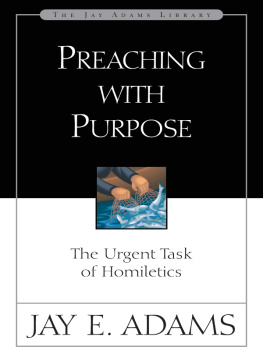
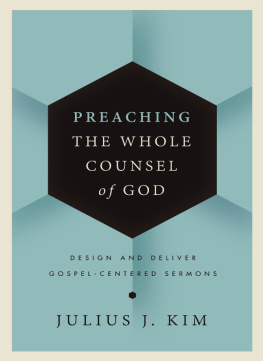
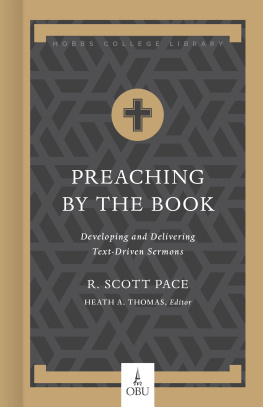
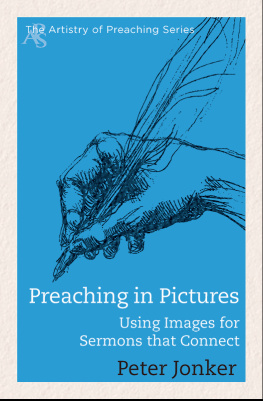
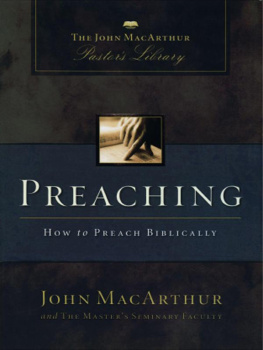

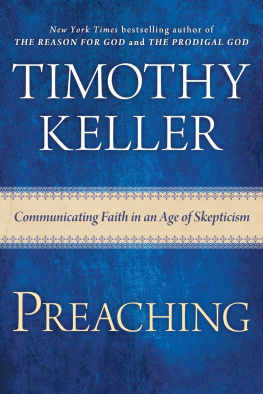
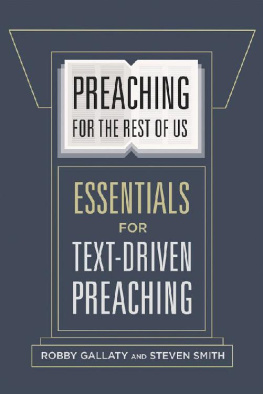
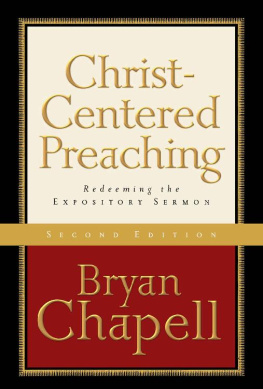
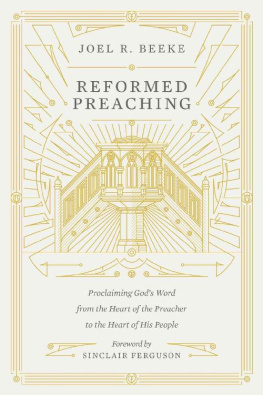

 The Artistry of Preaching Series
The Artistry of Preaching Series